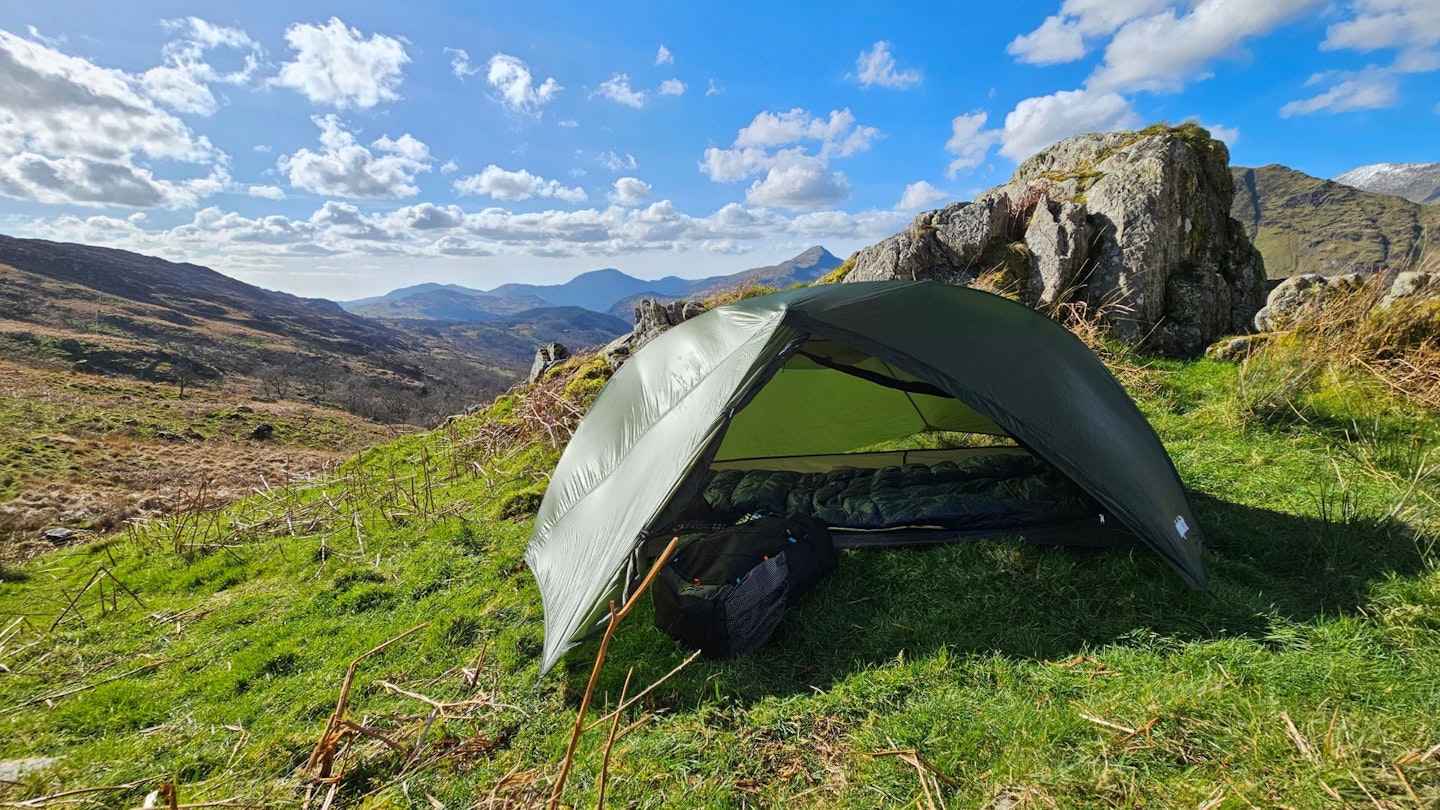The Alpkit Ultra 1 is exactly what its name suggests: an ultralight solo shelter. Designed for multi-day adventures, it’s a 3-season hiking tent that ought to work well for wild camping weekends, backpacking trips or weight-conscious mountain marathons and adventure races. With its compact packed size, it would also fit easily on a bike frame, making it a viable option for bikepackers too.
Technologically advanced, it employs ultralight fabrics and a carbon fibre pole set. This ensures that it packs small and weighs an impressively svelte 900g. All that for a UK RRP of £300 – in classic Alpkit style, this new offering seems to provide plenty of bang for your buck.
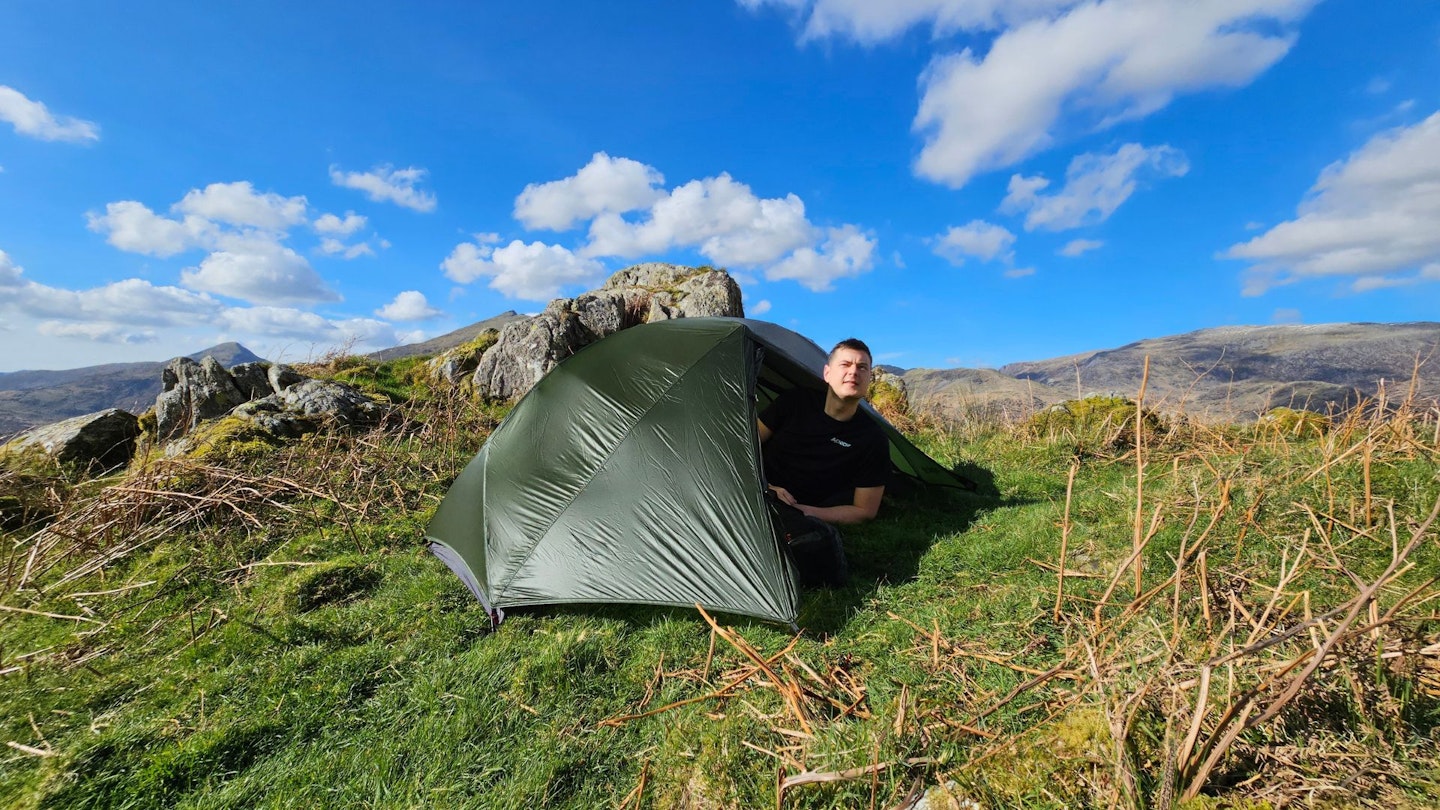 LFTO
LFTOalpkit.com
Pros
- Exceptionally lightweight
- Quick and easy to pitch
- Roomy vestibule
Cons
- Not the toughest fabrics
- Limited headroom
- Pitches inner first
| Type | Freestanding |
| Weight | 900g (plus optional 125g groundsheet) |
| Packed size | 42 x 12cm |
| Doors | 1 |
| Vestibules | 1 |
| Inner | 15D No-See-Um mosquito mesh, PFC-free, fire-retardant free |
| Fly | 10D Nylon coated ripstop nylon with PU backer, PFC-free, fire-retardant free |
| Groundsheet | 15D ripstop nylon PU (5000mm HH), PFC-free, fire-retardant free |
| Poles | Carbon fibre |
Design and features
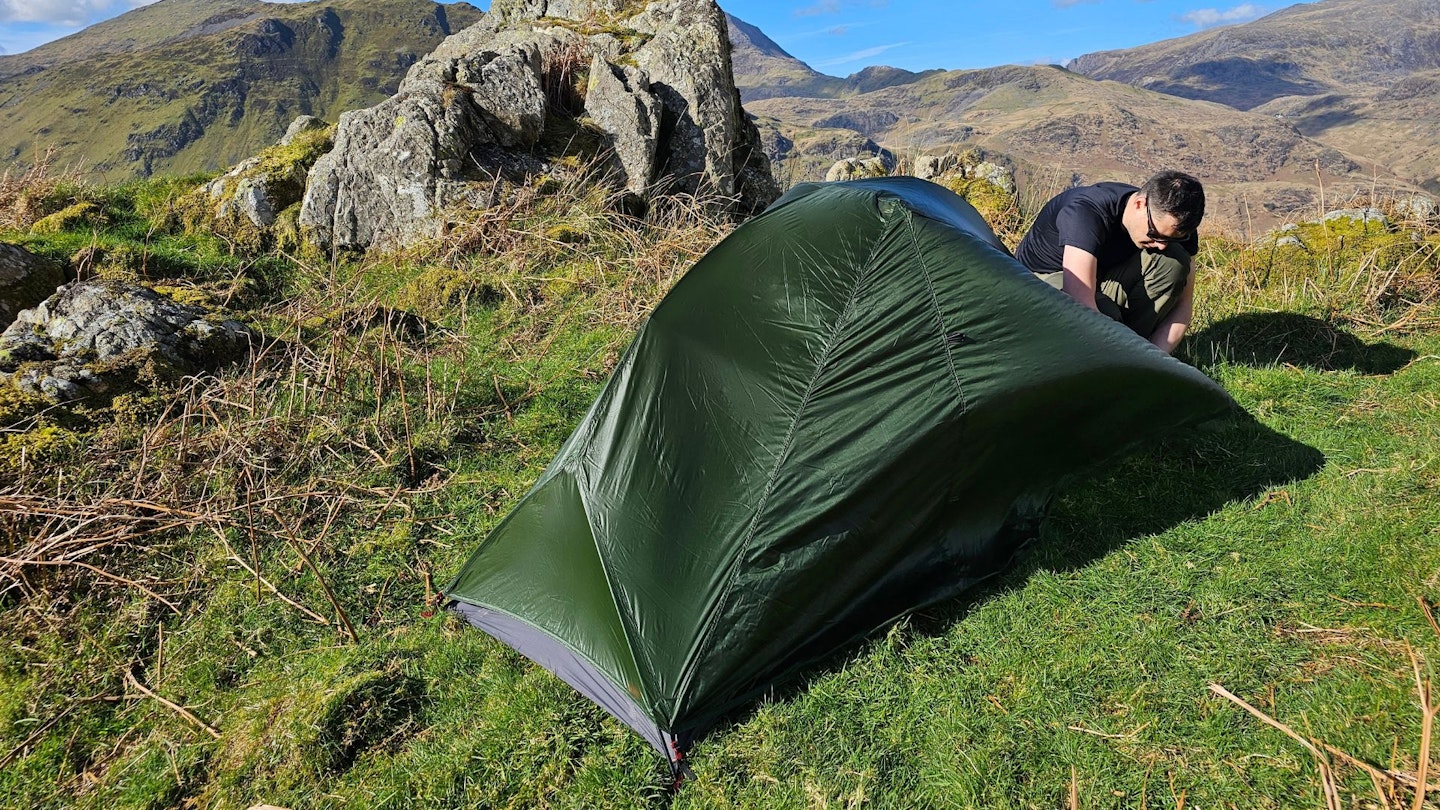
Alpkit introduced the Ultra 1 to its lineup in 2024, and is a double-skinned solo tent with a packed weight of less than a kilo. To achieve this impressively low weight, it’s made from ultralight fabrics and has a technologically advanced carbon fibre hubbed pole system.
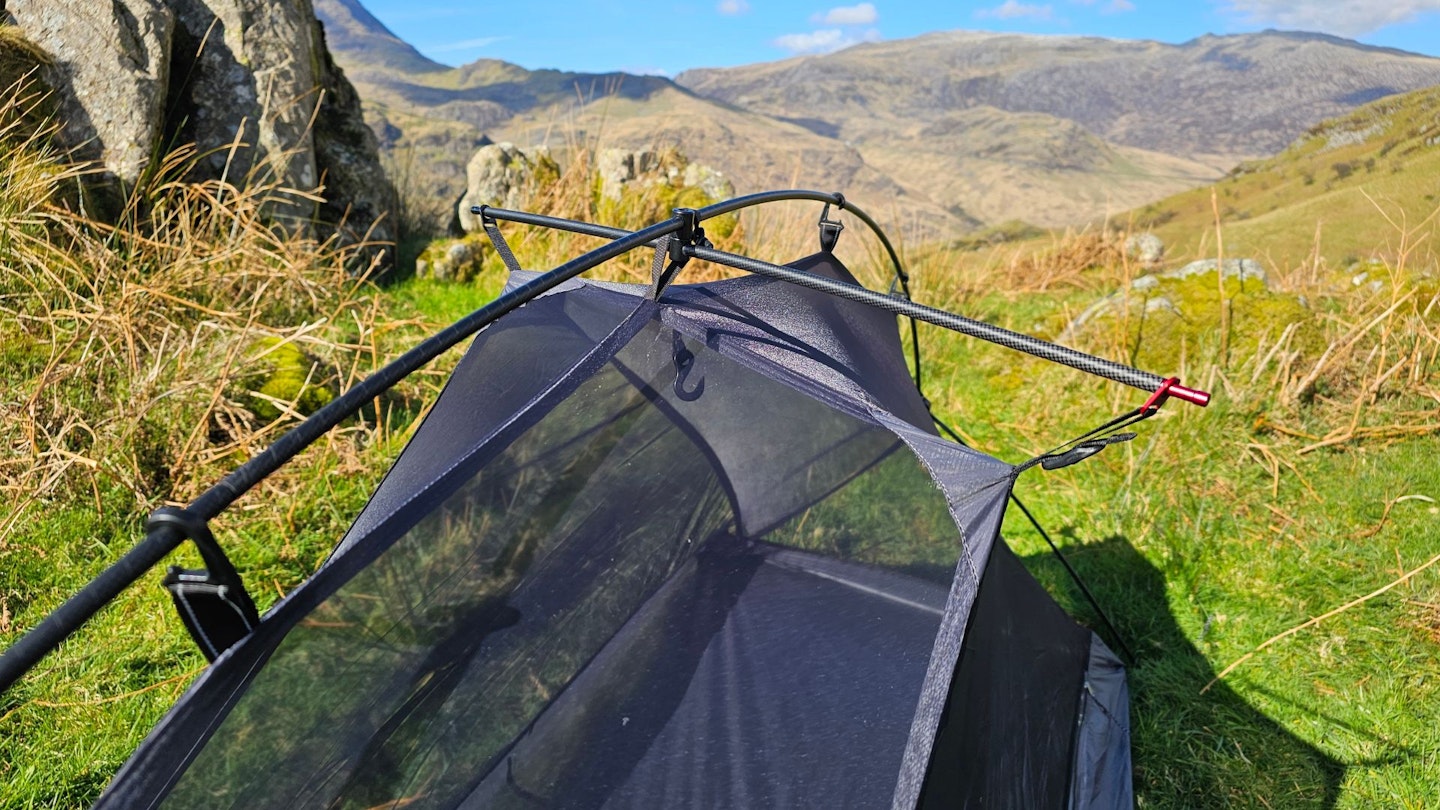
The design is freestanding, which makes it easy to move the tent if you need to hunt around for the flattest piece of ground. It does need to be pitched inner first, which is less ideal if you’re setting up camp in the rain, but it goes up quickly and easily. The pole system has an unusual but effective offset integrated spreader bar, designed to offer slightly improved liveability and a wider door entry. Chunky pole clips and an intuitive colour-coding system ensure that setup is simple and straightforward.
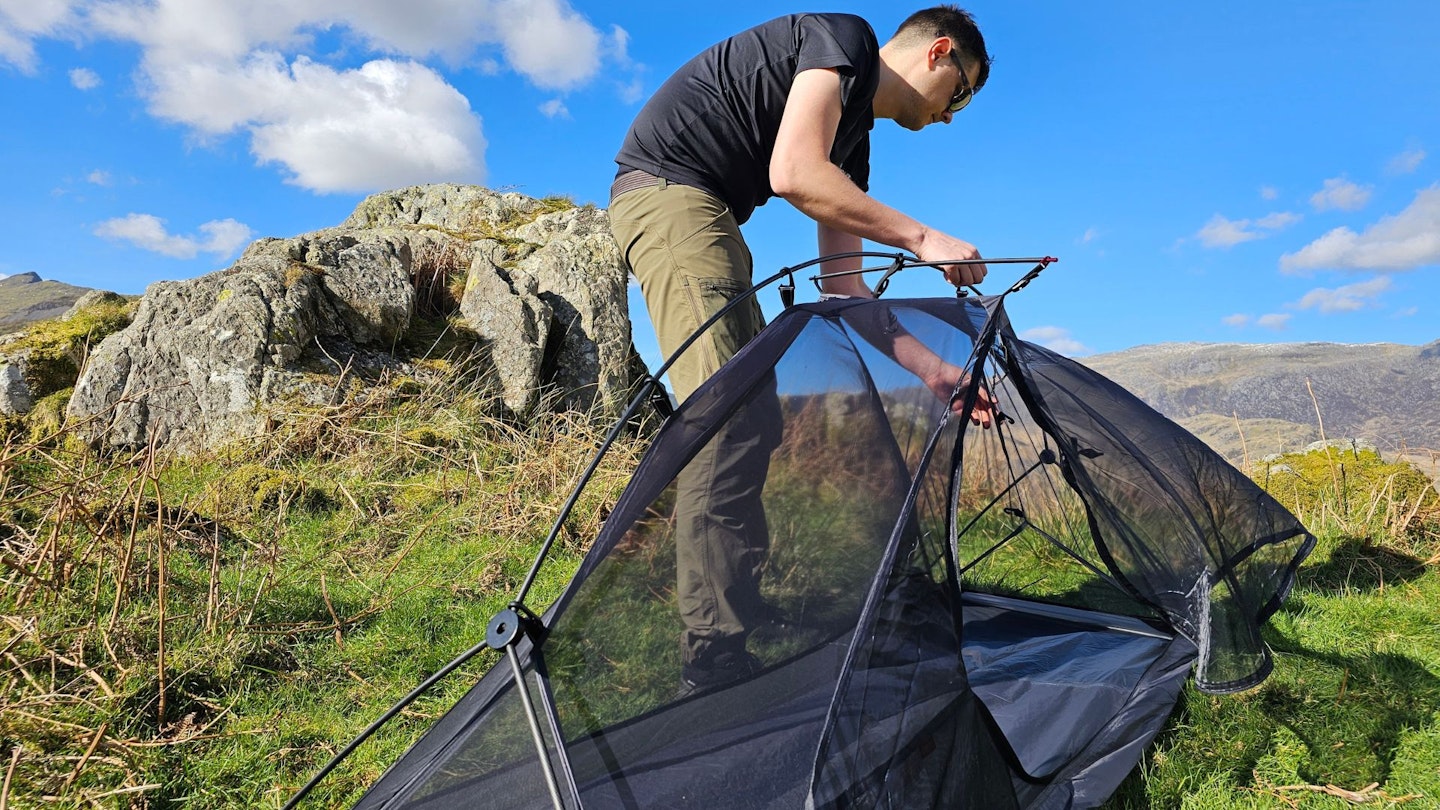
Inside, it isn’t the roomiest tent, with just 80cm headroom at the apex. If you’re 6ft plus, you’ll struggle to sit upright. However, floorspace is better, with the rectangular footprint measuring a pretty generous 210 x 77cm. The full mesh inner ensures good airflow, aided by a large doorway and a flysheet with a Velcro strutted vent.

There’s a single internal storage pocket for essentials and a hanging hook for a tent lantern. The single vestibule is a good size. It’s roomy enough to stash boots and a pack, whilst still leaving space to cook if needed. The flysheet door also has a well-designed curved zipper that ensures easy entry/exit and rarely jams or snags. It’s an excellent feature.
Performance
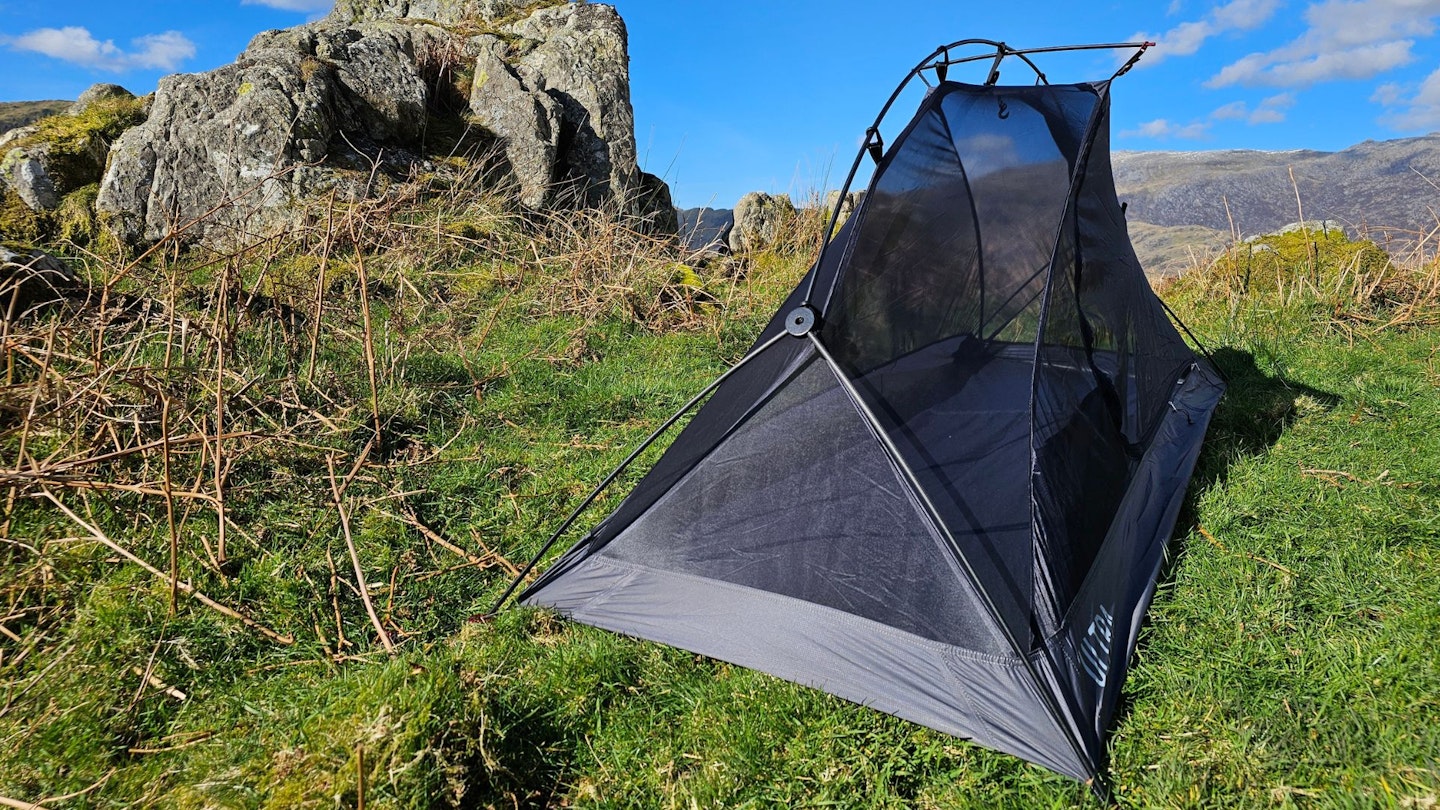
The tent has a fairly low profile that sheds wind well. However, the fly lacks any additional guy-out points to help anchor it down in breezy, blustery weather. The design also means that with the flysheet door unzipped, the inner is partly exposed to the rain. That’s not ideal if it’s tipping it down but you need to get out of the tent.
The carbon fibre pole system ensures excellent strength-to-weight. Carbon fibre is noted for its superior stiffness and rigidity compared to aluminium. But it is brittle, which means you’ll need to be careful when putting the pole sections together. Don’t accidentally step on the poles when pitching or try to ram them into a rucksack when packing away either.
Otherwise, the tent is very weatherproof. The bathtub groundsheet has a waterproof hydrostatic head rating of 5,000mm, which is impressive for such a lightweight fabric. However, the 15-denier nylon is thin enough that we’d still want to use the additional footprint (sold separately and weighing an extra 125g) for pitching on all but the lushest of grass.
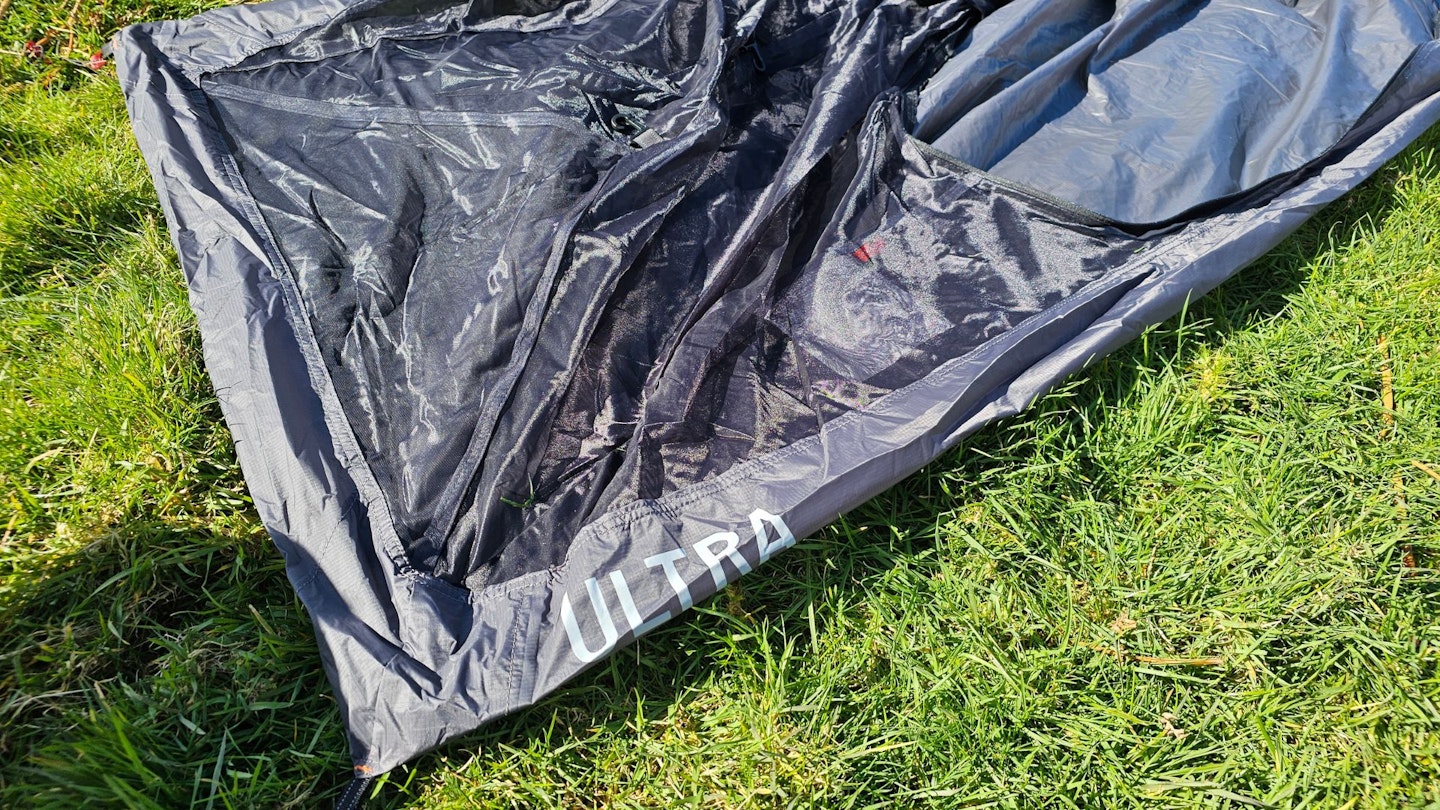
The flysheet is silicone coated for more durable waterproof protection. Siliconised fabrics do not require a water repellent finish and tend to outlast traditional PU coatings, since silicone is more resistant to hydrolysis and UV degradation. Overall build quality is similarly excellent, with reinforced pegging points and anodised aluminium hardware. Flysheet coverage is good for a 3-season tent, though the design undoubtedly prioritises ventilation over outright weather protection. Weight and pack size are excellent for a one-person tent.
Sustainability
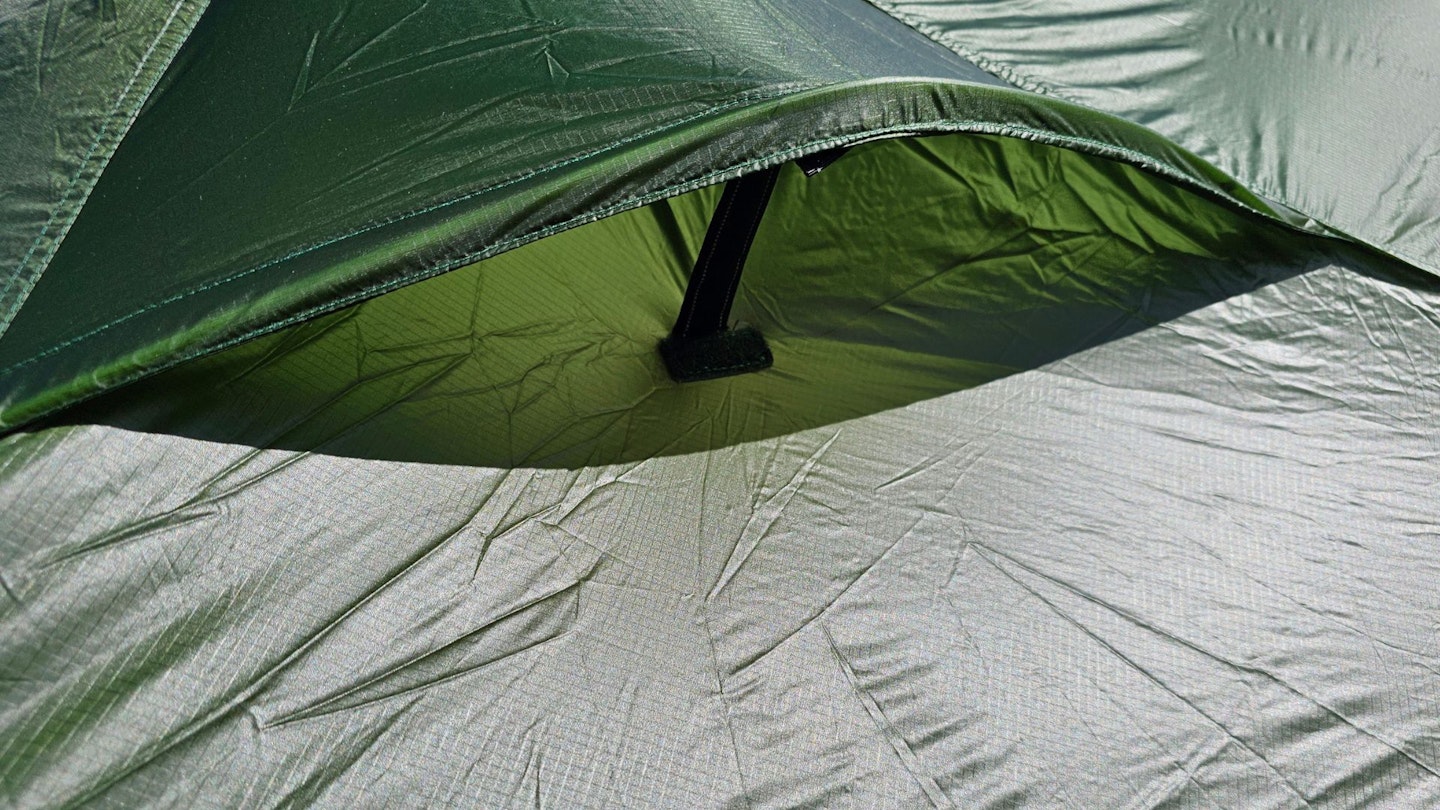
As mentioned, the main tent fabric is a super light 10D nylon with a silicone treatment. This means there’s no need for a chemical durable water repellent (DWR) finish, meaning the tent is also PFC-free - a huge plus from an environmental standpoint. Similarly, all seams are taped with TPU, which is more resistant to hydrolysis (seals being broken down by water), making your tent last longer.
The tent is also free from fire-retardant chemicals. Tent fabrics are commonly treated with these chemicals to improve their ability to withstand exposure to heat, flames and sparks. So, although their omission might be seen as a drawback, in recent years many consumers have become concerned by the fact that fire retardants use toxic chemicals that have been linked to carcinogens and complications with pregnancy. To allay these fears, Alpkit has not used them in the Ultra 1.

The tent is covered by Alpkit’s three year warranty, which the brand calls its ‘Alpine Bond’. Basically, if the product does not meet your expectations upon delivery, or if during its lifetime does not live up to the demands placed upon it, it can be returned to Alpkit for repair, replacement or refund. Alpkit also offers an end-of-life recycling scheme known as the Continuum Project.
The tent itself is made in China, but Alpkit states that all its factories have signed up to the brand’s supply chain Code of Ethics. This includes the Ethical Trading Initiative base code, fair pay, safe working environments, no child labour, no modern slavery, no bribery or corruption, no materials from conflict zones and humane farming methods.
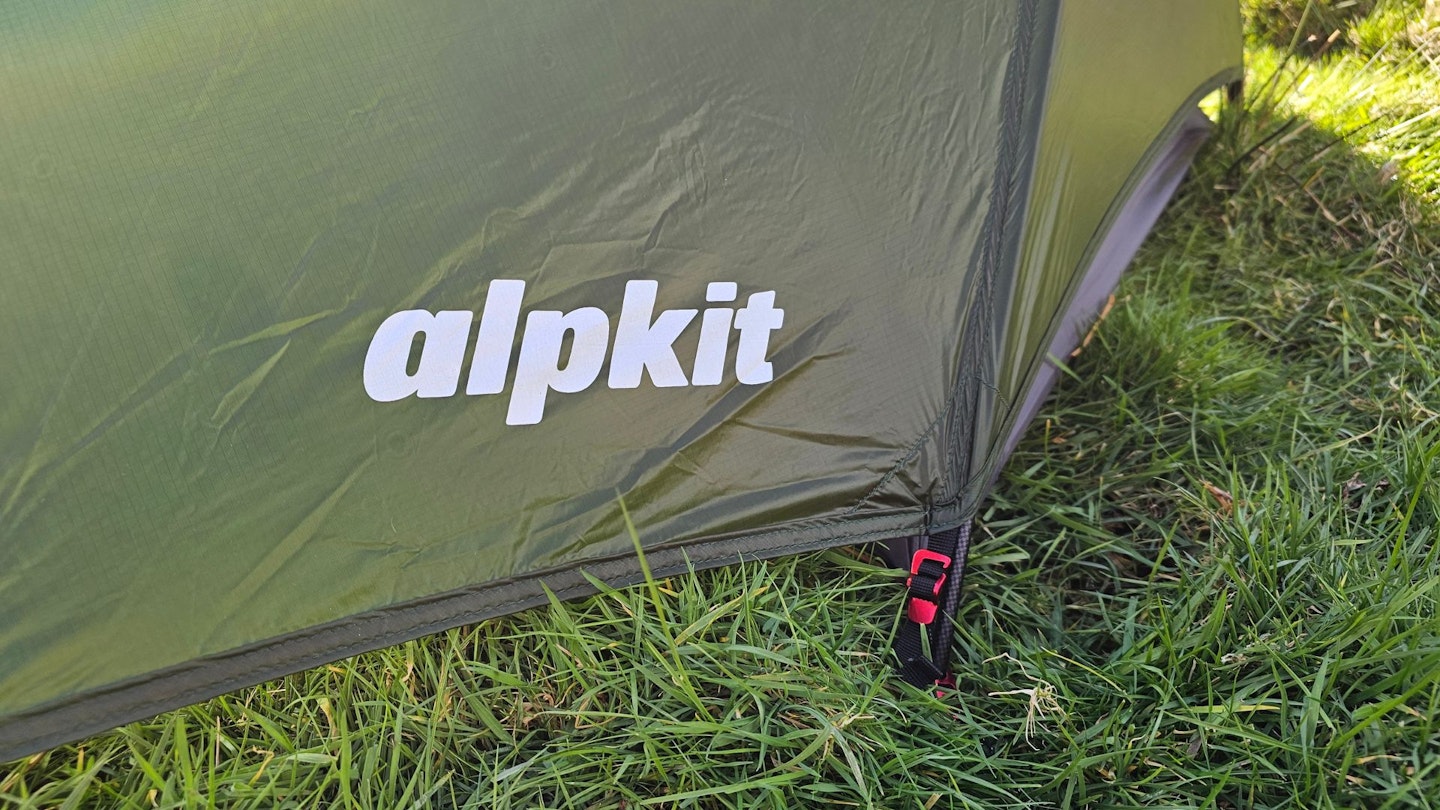
As a brand, Alpkit is also certified carbon neutral under PAS2060. The company has offset its operations and transport emissions, though it acknowledges that carbon offsetting is not part of the solution, simply a point to pass through on a journey to Net Zero.
Alpkit has joined the Science Based Targets Initiative which sets independent targets for the company to achieve to support the target to limit global warming to 1.5°C. Alpkit’s targets are to halve Scope 1 and Scope 2 emissions by 2025 based on a 2018 base year and reduce its total carbon intensity by 15% every year to achieve genuine net zero by 2050.
Price and competition
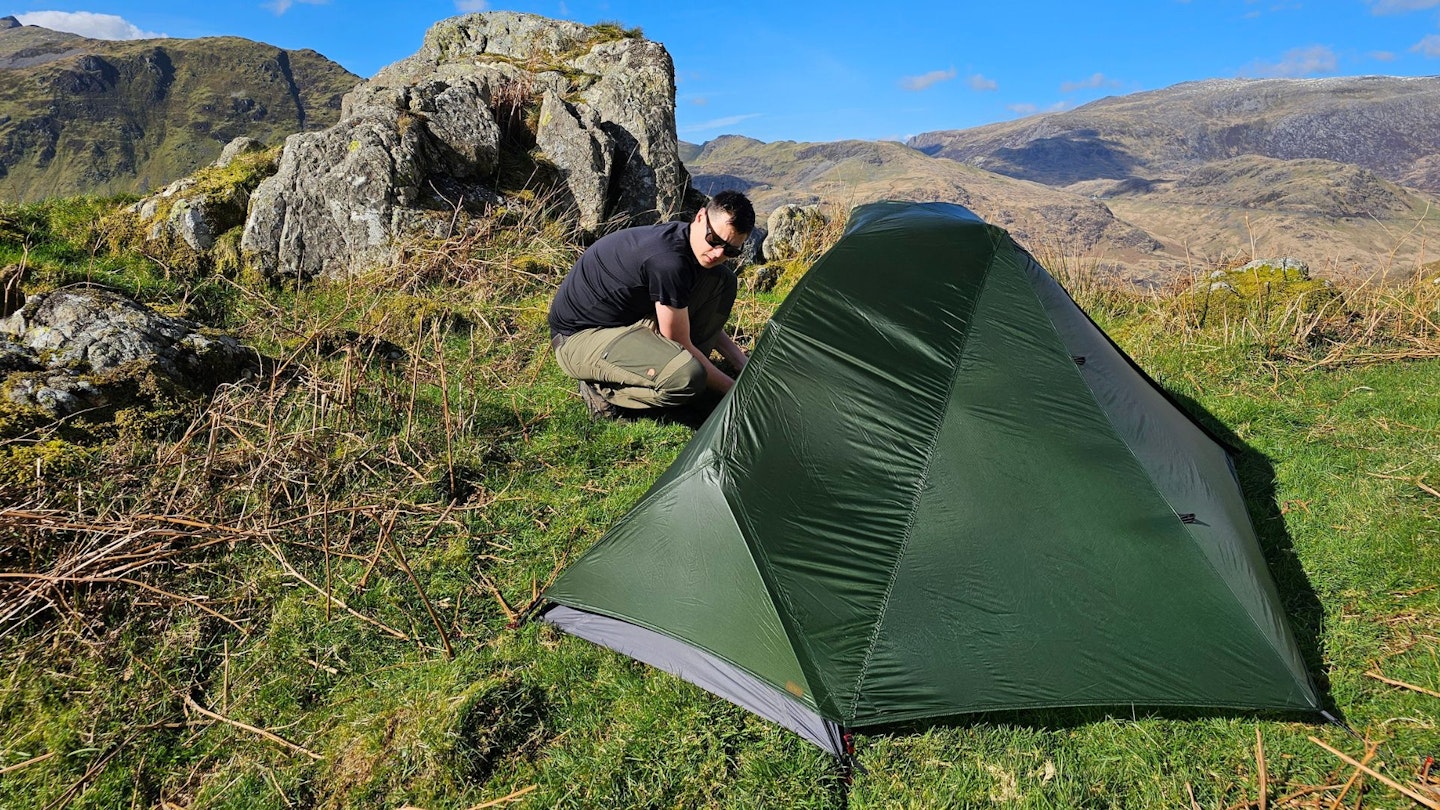
With an RRP of £300, this is a good value tent given the high-spec materials and fabrics used in its construction, such as its carbon fibre pole set. For comparison, other carbon fibre tents on the market (like the MSR Carbon Reflex 1 for example) typically come in at £500+.
Of course, such an ultralight tent is a niche model. Not everyone will need a sub-kilo shelter, in which case there are plenty of alternatives around that are both tougher and better value. But if you are seeking to save grams, this is a compelling option. It’s as light as many single-skin or trekking pole shelters but significantly more protective, and better at managing condensation. It’s also better suited to three-season British conditions than other double-walled ultralight rivals like the NEMO Hornet Elite Osmo 1. On the other hand, it’s a lot less spacious than the NEMO Hornet, especially in terms of headroom.

If you want a double-walled tent with bigger dimensions for only slightly more weight, then perhaps consider the Exped Mira 1 HL or the Sea to Summit Alto TR1 Plus. Both come with significantly higher price tags though.
Verdict
A technologically advanced tent with an impressive sub-1kg weight and small packed size. At around £200 cheaper than comparable carbon fibre poled tents, it’s arguably good value too. However, if you’re not a committed ultralighter, you might want to look elsewhere, since you can buy roomier, cheaper and more robust solo tents, albeit with an added weight penalty.
How we tested

We borrowed a test sample of the Alpkit Ultra 1 from the brand for several weeks, mainly wild camping in the hills and mountains of Eryri (Snowdonia). This included backpacking stretches of several classic long-distance trails such as the Snowdonia Slate Trail (Llwybr Llechi Eryri), the Cambrian Way (Taith Cambria) and the Snowdonia Way (High Route).
As well as individual product testing, this tent was pitched alongside the five other leading solo backpacking tents selected for our 2024 group test, enabling direct comparison of overall dimensions, space, weight, packed size, ease of pitching and other key features.
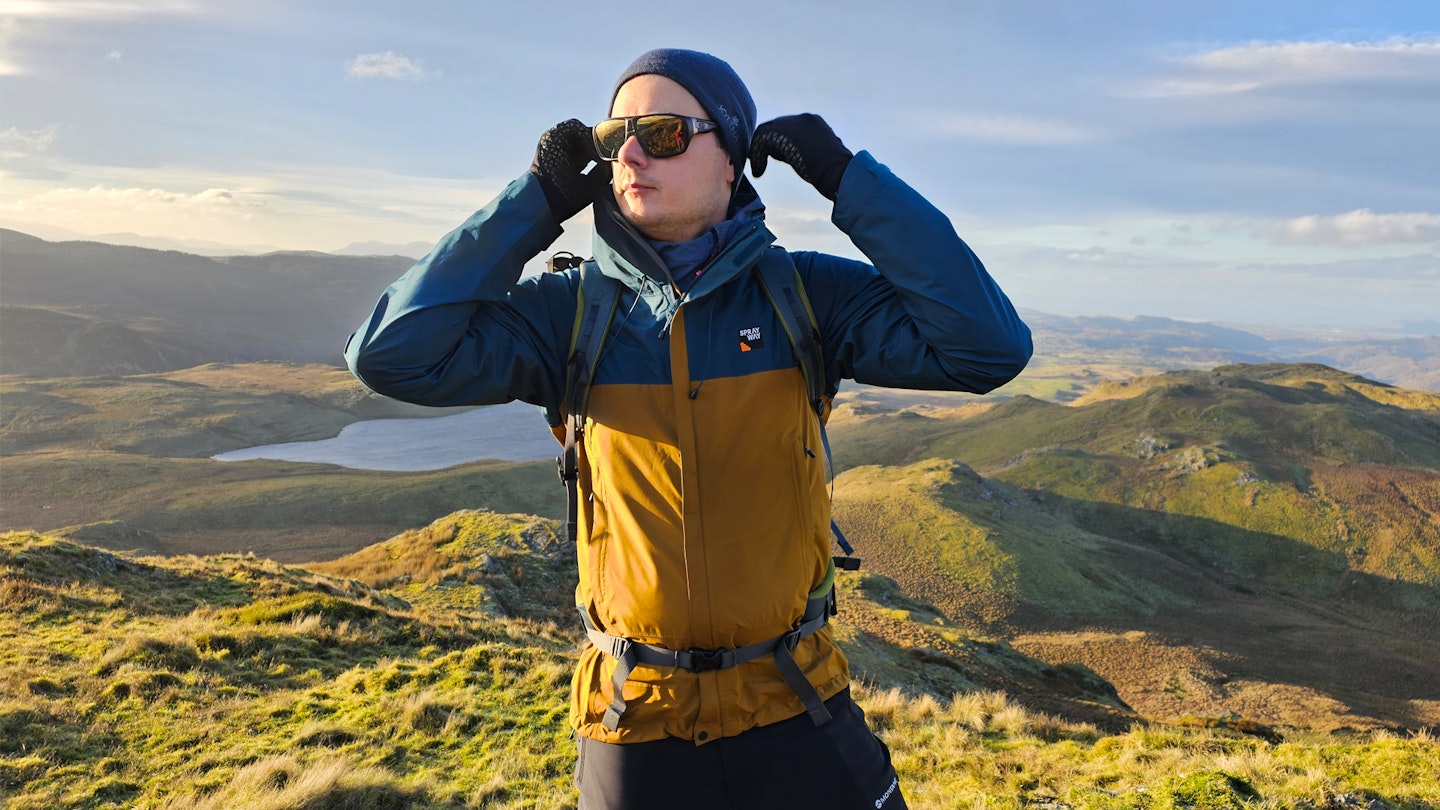
The reviewer was Matt Jones, one of Live For The Outdoors' and Trail magazine’s regular gear testers. Matt is an experienced wild camper, backpacker and long-distance walker. He’s completed numerous trails end to end in the UK, including the Pennine Way, the Cambrian Way, the West Highland Way and the Great Glen Way. He’s also hiked extensively in the US, Spain, Scandinavia and New Zealand.
